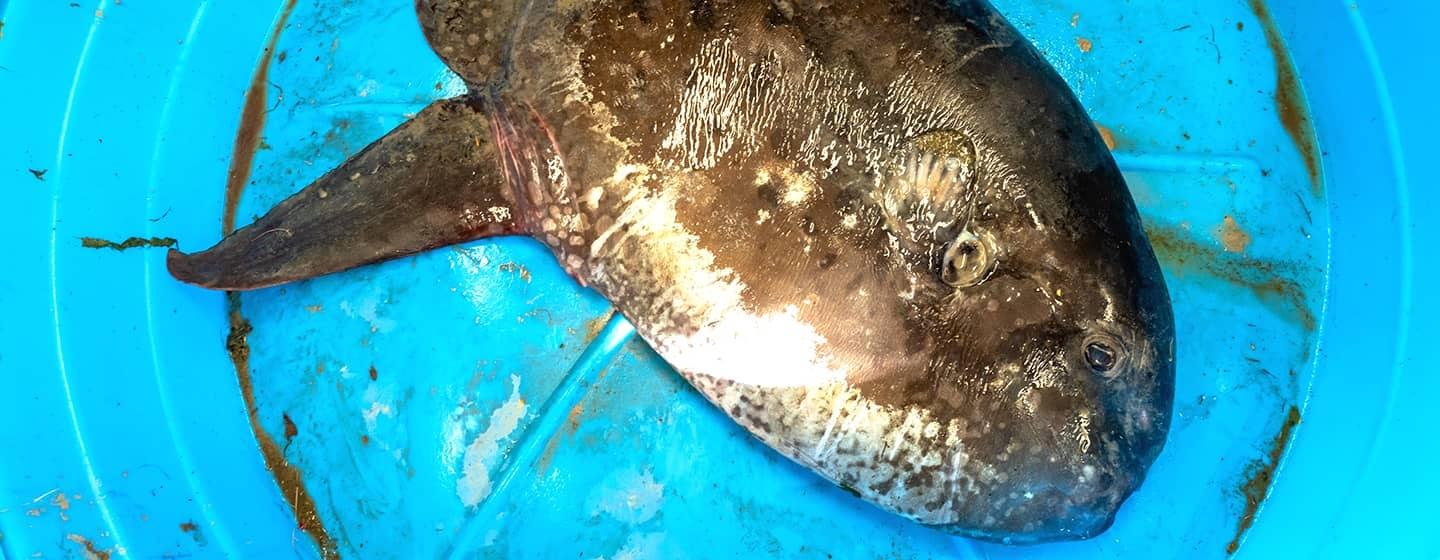Enormous Rare Sharptail Mola Fish Washes Ashore in North Carolina


Museum curators and collection specialists always get excited when a new specimen arrives at their door. They want to prepare it and put it on display so museum visitors can learn and enjoy. However, they also want to make the specimen available to researchers for study.
So when a rare sharptail mola washed up on North Topsail Beach near the Seaview Pier in December, the staff at the North Carolina Museum of Natural Sciences in Raleigh scrambled to meet the challenge of adding it to its collection.
“Merry Fishmas,” laughed Lily Hughes, PhD, an evolutionary biologist and Curator of Ichthyology at the museum. (Ichthyology is the branch of zoology that deals with fishes.) “I love a good challenge, and I love adding to our collection of 1.4 million specimens, especially with a creature this rare and unique. But I didn’t realize just how big a challenge this would be.”
Adding the sharptail mola to the museum’s collection is a challenge because it isn’t an ordinary fish. This specimen weighs 450 pounds and measures 74 inches (6.1 feet) from nose to tail and 82 inches (6.8 feet) fin to fin.
“The folks at the pier who reported the fish told us it seemed to be in perfect condition, and it was cold outside so the fish was preserved,” said Gabriela Hogue, Ichthyology Collections at the museum. “Volunteers hauled it up the beach and iced it down and kept it covered. We even found a large pickup truck to bring it back to Raleigh. It’s been one challenge after another, and then we needed to figure out what to do once we got to the museum.”
Researchers took the fish to the North Carolina State University School of Veterinary Medicine to be weighed using a scale normally used for cows and horses.
The specimen was then brought to a special museum lab, where it was placed in a large livestock feed tank. It will sit in the tank in a 10% formalin solution for months to be preserved and then transferred to a solution of 70% ethanol.
“Let’s just say it won’t be kept in the usual specimen jar,” added Hughes. “We’re very lucky because very few museums have facilities like ours that can preserve a huge sharptail mola.”
A piece of the tail was clipped off for genetic research before the preservation process began. There was no obvious sign of trauma on the fish so it could have died from cold shock or parasites. That’s a question to be answered later.
“There’s no doubt this is an important specimen for research because this is a rare fish that was perfectly intact when it washed ashore,” added Hogue. “We want to figure out how we can make it available for the public to view and for scientists to study. But that’s going to involve special tanks and that means a huge cost.”
The preservation process will take months. It’s not clear when the public will get to see the sharptail mola in the museum because of its size. However, special behind-the-scenes tours are available to museum members, who may be the first to see the new addition to the collection.
“Every specimen has a story, and I really hope everything comes together, including the logistics and the funding, so we can get the story of this giant sharptail mola out to the public and to scientists,” said Hogue. “It’s so unique, and we’re so lucky to have it, and its story needs to be shared.”